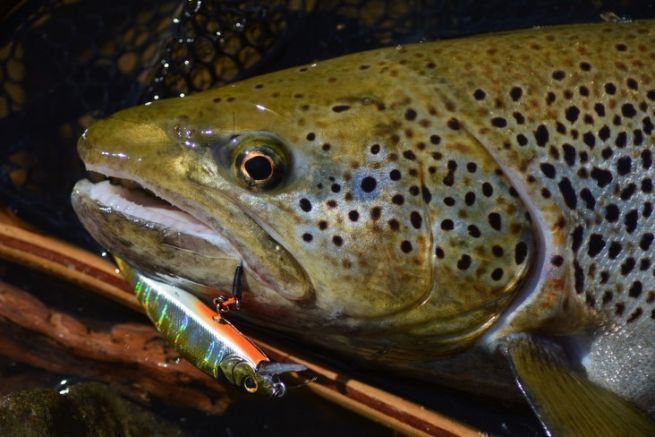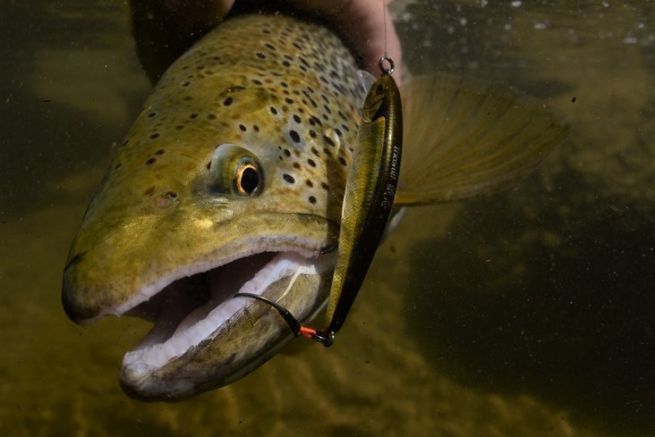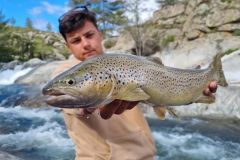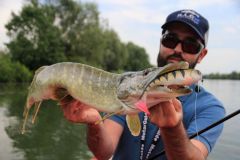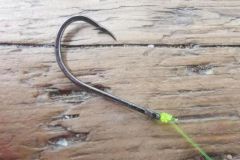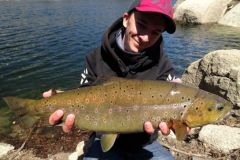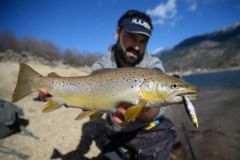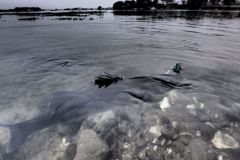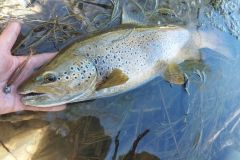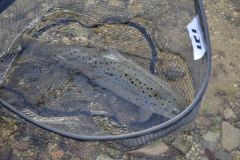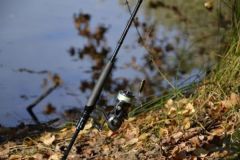The different animations
The relevance of the sinking minnow for trout is obvious. It is a highly effective way of catching fish in fast-flowing streams. Sinking minnows can be reeled in very quickly. But they really come into their own with pronounced twitching animations that throw the lure off-center, making it vibrate and shimmer.
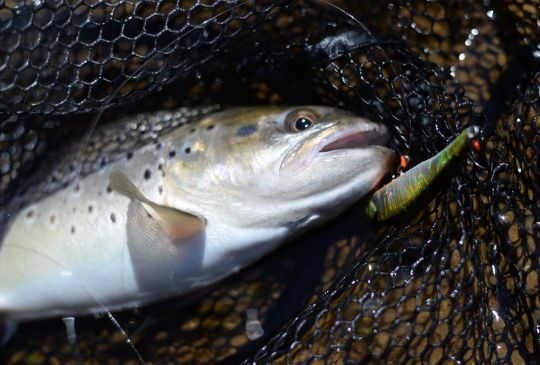
- In torrent
In torrents, the basic use is to cast upstream, under a waterfall or rock. The lure is left to sink, moving little and sinking where you cast it. You then print a series of twitches to trigger an attack. If a fish is in the vicinity, it's very often a quick hit!
- In lake
In mountain lakes or reservoirs, you can cast this dense lure far out, let it sink and reel it in nervously to prospect a large volume of water. With this minnow you can fish all water layers and fish very deep, close to the bottom. The bites are often very violent as the trout seize the lure on fast animations.
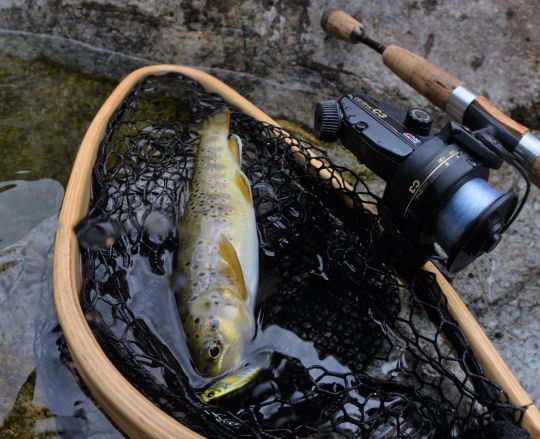
The right equipment
- The cane
The use of sinking minnows requires special equipment. To create animation on a lure with high inertia, the force exerted by the angler must be perfectly transmitted to the lure. This calls for a very responsive, fast or extra-fast rod. This stiff action will not absorb the angler's wrist strokes, and the slightest movement will be transmitted to the lure, which will start to move. With a parabolic rod or one that's too soft, you'd have to force the movement and the animations would not be very precise. In addition, forcing the movement may cause you to miss bites or be less precise in controlling the lure. You'd also lose comfort and feel...
- The line
In line with this quest for perfect transmission of animation to the lure, many anglers prefer to use braid. Its low elasticity is in line with this desire for maximum reactivity with swimming fish. For my part, I use braid when I'm using sinking minnows over 6 cm in length and weighing at least 7 g or so. Below that, I use nylon, which handles some very violent bites and the jumps of small fish better than braid.
- The reel
I almost always use a high-ratio reel on lakes or when fishing upstream. The retrieve speed allows me to keep perfect contact with the lure and I don't need much torque (force) when retrieving. But that's another reel story which will be detailed in a future article...

Once you understand how to use sinking minnows, they reveal their full potential and quickly become indispensable in our tackle boxes? Many French anglers have understood this!

